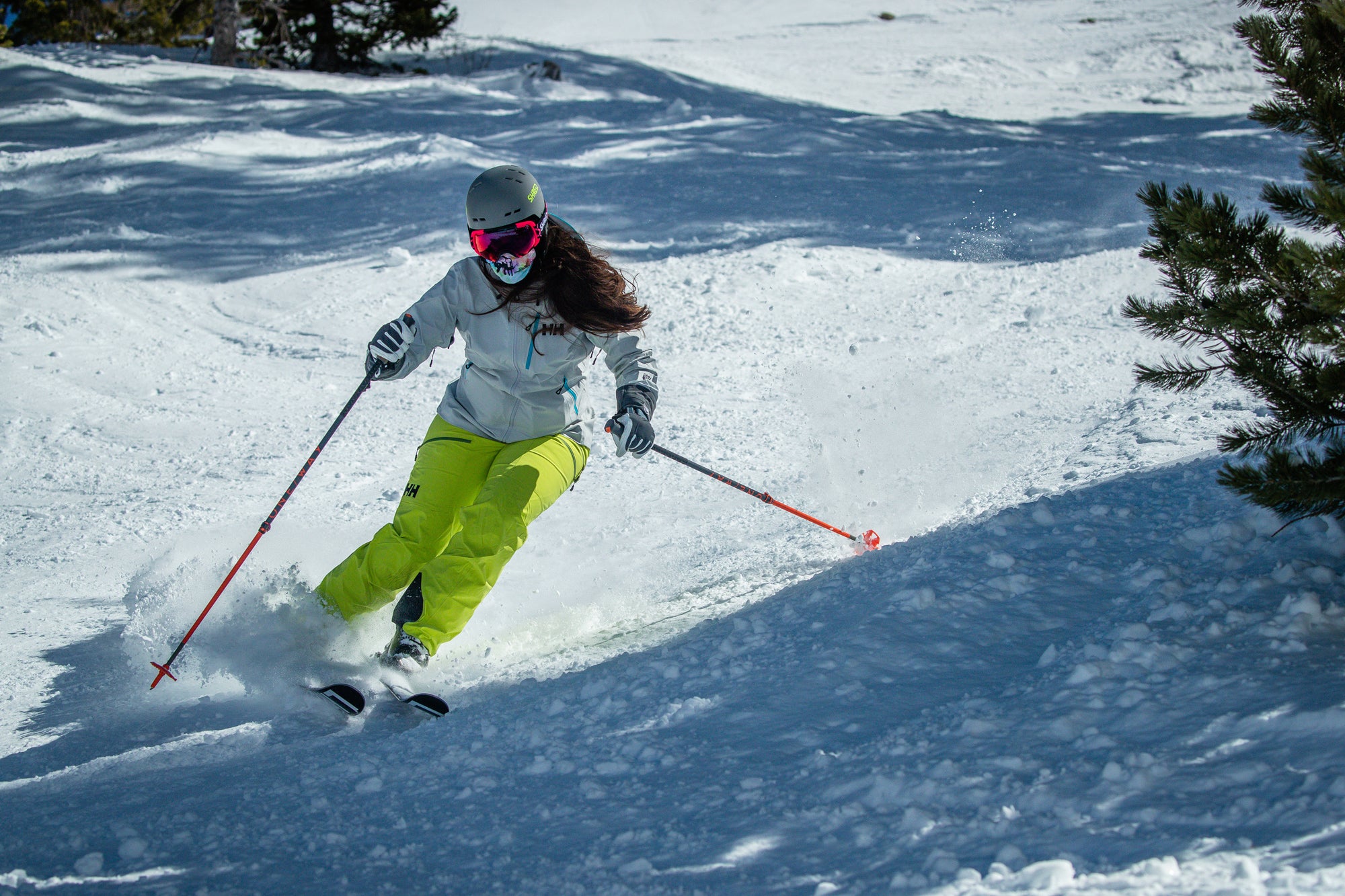If you buy through our links, we may earn an affiliate commission. This supports our mission to get more people active and outside.Learn about Outside Online's affiliate link policy
What’s Great (and What’s Less Great) About the Salomon Stance Skis

Erika Northrop skiing the Salomon Stance W 88 at Solitude Mountain Resort. (Photo: John Howland)
Some of the gear we test at SKI is loved by some but doesn’t quite tickle everyone’s fancy. That’s what we cover here in our “What’s Great (And What’s Less Great)” series. Join Outside+ to learn why even the best-made gear gets under our skin.
This coming winter, one of the biggest ski brands in the world will be launching a mega-marketing plan for its beloved QST line of skis. Last year, however, Salomon somewhat quietly introduced the Stance family of skis as all-mountain options that are very much worthy of consideration for strong all-mountain skiers in North America.
The Stance line offers skis with waist width sizes at 90mm, 96mm, and 102mm. There is also the Stance W line for women with 88mm and 94mm waist width options. All of these skis are built with two sheets of metal, full poplar wood cores, and sandwich sidewall construction.
To add some supple feel and prevent the ski from feeling too planky, Salomon modified the upper sheet of Titanal with “windows” in the shovel and tail, where the company inserted a laminate made out of blended carbon and flax. They also use this mix in certain QST skis, and it helps provide a playful but damp feel.
What’s Great about the Salomon Stance Skis
The entire Stance line is significantly more beefy than the metal-free QST line. In fact, unless you’re familiar with Salomon’s S/Race skis—which are pretty hard to find in North America where brands like Head and Atomic rule the race scene—it’s hard to describe how powerful the Stance line is.
When the Stance line premiered at SKI Test at Taos Ski Valley, N.M. in 2020, the testers recognized the entire family of skis as being very stable at speed in particular. Every single ski entered that year—the Stance 90, Stance 96, Stance W 88, and Stance W 94—had an average Stability at Speed score higher than 4 out of 5. Hard-Snow Integrity scores were also very elevated, and, for the wider Stance 96 and Stance W 94, Crud Performance was ranked especially high.
Watch: Video Review of the Salomon Stance W 88
“On edge, this ski takes it up a notch. Hold on to your hats because it’s time to go!” said Aspen-based tester Kevin Sommers, echoing his high rating for Stability at Speed on the Salomon Stance 96. “Performed surprisingly well in the bumps for what felt like a stiff ski.”
Courtney Krause, a tester based in Colorado’s Front Range, also summed up the Stance W 94 well: “I was pleasantly surprised by this ski’s maneuverability, edge initiation, and power. It simply crushed any type of snow with style. This is exactly what an all-mountain ski should be: simultaneously fun, versatile, and burly.”
What’s Not So Great about the Salomon Stance Skis
The Stance line deserves more respect—as well as beefier quadriceps—than many would expect for a ski from Salomon. They have a complex character best appreciated by strong skiers who know how to tip a ski on edge or properly weight skis in the bumps. In other words, the Stance line is a true advanced/expert level ski, which is territory Salomon has dabbled in before but it hasn’t really ever been the brand’s bread and butter in North America.
“Great damp and solid feel, not something I expected from a Salomon,” commented one tester with racing and freeride roots at the SKI Test in Taos. “Gives back what you put into it.”
A few testers noted that the metal makes the ski fairly torsionally unforgiving in particular, which means that the skier, rather than the ski, has to do a little more work to make good things happen. Additionally, all of the Titanal and damp skiing power led to reduced scores for Playfulness for nearly every member of the Stance line in Taos. For a company that pioneered twin-tip skis and still creates skis with “look at me, I’m in the air” bases, making damp skis that prefer to stay on the snow goes against what most skiers believe the brand can do.
“This ski charges and is best suited for the gal who likes to ski fall line with wide-open spaces and not getting into tight situations,” noted a Telluride-based female tester about the Stance W 94. “A bit stiff, especially in the tails.”
Ultimately, these are good stereotypes to break. Salomon has European-based racing athletes who are on the same level—if not higher as they continue to stand on more podiums every year—as their North American freeride teammates. That means the company can create both popular skis for recreational freeriders with the QST as well as a line of all-mountain skis with metal that is more similar to the recreational skis that other brands found on the Alpine World Cup tour bring to the North American market.
The reality is that North American skiers are still figuring out how to wrap their heads about a brand that can do both.
Get the full story on more skis and gear in the What’s Great (and What’s Less Great) series.
Watch: Salomon Stance Line Review
The 2020-’21 Reviews of the Salomon Stance Line
- Salomon Stance 96
- Buy now: REI | Backcountry | evo | Skis.com | Amazon
- Salomon Stance 90
- Salomon Stance W 88
- Buy Now: evo
- Salomon Stance W 94
Editor’s note: The Salomon Stance 102 was not entered in the 2020-’21 SKI Test.